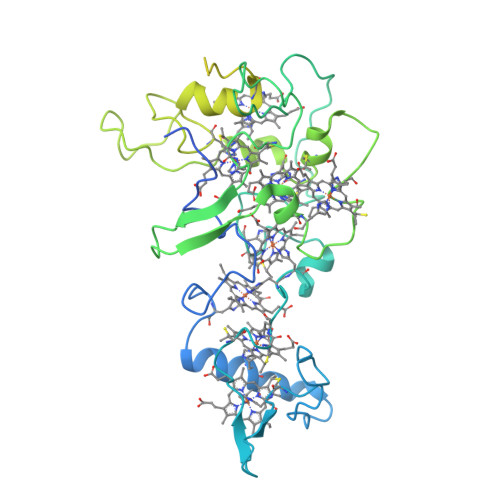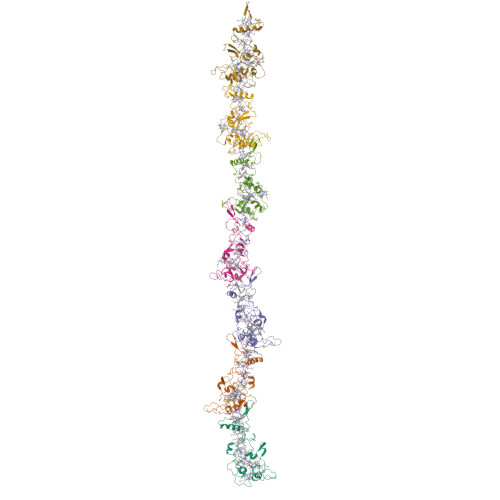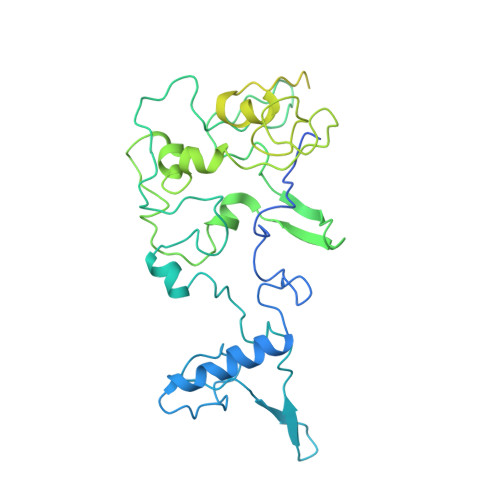Structure of Geobacter OmcZ filaments suggests extracellular cytochrome polymers evolved independently multiple times.
Wang, F., Chan, C.H., Suciu, V., Mustafa, K., Ammend, M., Si, D., Hochbaum, A.I., Egelman, E.H., Bond, D.R.(2022) Elife 11
- PubMed: 36062910
- DOI: https://doi.org/10.7554/eLife.81551
- Primary Citation of Related Structures:
8D9M - PubMed Abstract:
While early genetic and low-resolution structural observations suggested that extracellular conductive filaments on metal-reducing organisms such as Geobacter were composed of type IV pili, it has now been established that bacterial c -type cytochromes can polymerize to form extracellular filaments capable of long-range electron transport. Atomic structures exist for two such cytochrome filaments, formed from the hexaheme cytochrome OmcS and the tetraheme cytochrome OmcE. Due to the highly conserved heme packing within the central OmcS and OmcE cores, and shared pattern of heme coordination between subunits, it has been suggested that these polymers have a common origin. We have now used cryo-electron microscopy (cryo-EM) to determine the structure of a third extracellular filament, formed from the Geobacter sulfurreducens octaheme cytochrome, OmcZ. In contrast to the linear heme chains in OmcS and OmcE from the same organism, the packing of hemes, heme:heme angles, and between-subunit heme coordination is quite different in OmcZ. A branched heme arrangement within OmcZ leads to a highly surface exposed heme in every subunit, which may account for the formation of conductive biofilm networks, and explain the higher measured conductivity of OmcZ filaments. This new structural evidence suggests that conductive cytochrome polymers arose independently on more than one occasion from different ancestral multiheme proteins.
Organizational Affiliation:
Department of Biochemistry and Molecular Genetics, University of Virginia School of Medicine, Charlottesville, United States.



















